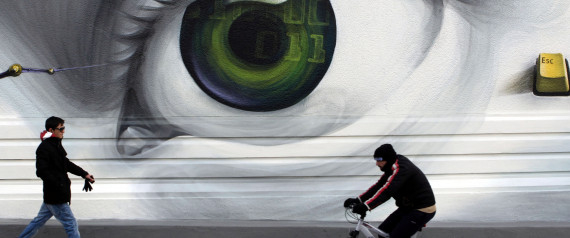글번호 : 54109855
작성일 : 15.03.29 | 조회수 : 310
| 제목 : This Part Of Greece's Capital Is Flourishing Amid Austerity | 글쓴이 : eu-center |
|
|
|
|
This Part Of Greece's Capital Is Flourishing Amid Austerity
Ozy | By Laura Secorun Palet
Crickets. That’s what Sofia Vamiali heard when, in 2009, she reopened her art gallery in the heart of Athens. While she had been renovating her successful four-floor exhibition space, the global economy had been collapsing, and so no one was clamoring to get inside. And now that Greece has really tanked, how’s the gallery doing? “Everything has changed, but maybe for the better,” says Vamiali.
It’s a curious thing, but amid a stunning unemployment rate (26 percent), unsustainable debt (almost twice the gross domestic product) and the threat of more austerity, Greece’s capital city is flourishing in one way: as a mecca for artists. And not despite the debt crisis, but because of it. The very downturn that brought Greece to its knees has also made it fertile ground for creativity. Prices are cheap, open spaces are plentiful and social tensions are sending artists into rapture. The world’s largest, most prestigious quinquennial exhibition of contemporary art, “Documenta,” will come to town in 2017 under the banner “Learning From Athens.”
Part of this is actually economics. Struggling businesses have banded together to promote Greece as an inexpensive travel destination, and the effort seems to be paying off: Tourism there grew by almost a quarter in 2014. Many of the new visitors are starting to look beyond the ruins, both ancient and modern. German design student Verena Stalf, 23, went to Athens for the museums but found herself captivated by its contemporary galleries. “There’s a very special energy. Things are shaking up here,” she says.
To be sure, “special energy” doesn’t pay the grocery bill, and the Greek art revival has a certain irony to it. Even as foreign artists come to gawk and be inspired, Greeks have fled their failing home for more financially salubrious quarters — some 200,000 of them since the start of the financial crisis five years ago. “Much of the middle class that used to buy art has simply vanished,” says Vamiali. As a result, the boom for art-making hasn’t been a boom for the galleries showing their work. The local art market, which was small but profitable before the crisis, has contracted, with some galleries cutting back on exhibitions and four of them shuttering their doors entirely. Market-wise, Athens is a long way from being London or Paris or even Berlin.
“Things are not better in terms of money, but they have gotten much more interesting in terms of ideas.”
Which is why, for the dozen commercial galleries left, maintaining a global profile is crucial. This means having websites in English, bringing in collectors and artists from abroad and taking Greek artists to international contemporary fairs like Frieze in London. This strategy is working well for the Breeder gallery, a hot contemporary space with vast, minimalist showrooms that’s housed in an old ice cream factory in the trendy Metaxourgeio district. In its attic: a pop-up restaurant.
Can hard times be a muse? Greek creators say they’re incorporating political upheaval and social frustration into their work. Stefanos Tsivopoulos, for instance, opened the Biennale of Venice with a film about the value of money, while the graffiti of street artist Bleeps reflects on the hardships faced by Southern Europeans. The artist Stefanos, meanwhile, draws sarcastic vignettes on actual euro banknotes. “Things are not better in terms of money,” says Angelo Plessas, an Athens-based multimedia artist, “but they have gotten much more interesting in terms of ideas.” He says he wouldn’t want to be working anywhere else at this moment.
Yet Athens’ greatest selling point as an artistic destination may be its lifestyle. Plenty of studio space and cheap wine are every struggling artist’s dream, and the cradle of Western civilization has it all. That’s why Greek artist Augustus Veinoglou has chosen Athens to set up Snehta, an international art residency program. In a fashionable quarter of Athens, renting a large apartment — big enough for huge canvases and installations — costs about $500 a month, about a third of what it does in gentrified Berlin. Northern capitals still attract the collectors, but they can’t compete with the Mediterranean combo of sunshine, delicious food and joie de vivre. Eleni Koroneou, who owns one of the city’s oldest contemporary art galleries, says she sees many more international artists coming to Athens. “And why wouldn’t they? Berlin is so cold!”
Yes, the challenges are still countless. All this new raw talent needs a strong ecosystem to sustain it and more money to help it grow. But public funding is not likely to start flowing anytime soon, and the highly anticipated, state-of-the-art National Museum of Contemporary Art — which has cost more than $3.2 million and promises to be a home for many of these new artists — was supposed to inaugurate last year, but the date has been postponed due to legal troubles.
Still, optimism is alive and well among Athens art lovers. “Creativity is vital, now more than ever,” says Plessas. “Marcel Duchamp once said art is an aspirin for life’s headaches, and Greece has plenty of headaches.”
(인턴 김준성) |
|

